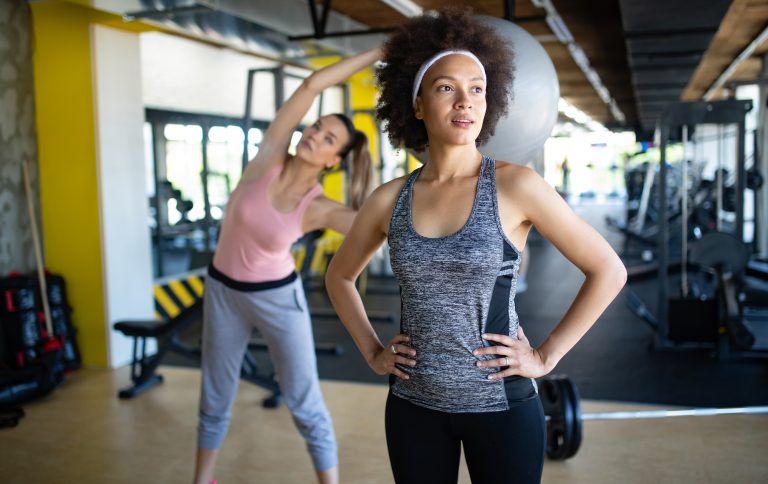According to the IHRSA, Pilates is women’s most popular gym activity. But it’s not just for the ladies. If you’re wondering whether to add Pilates to your strength-training fitness regimen, consider that its founder, Joseph Pilates, was a German boxer. Pilates is trendier than ever, but its upsides are timeless. Regular practice provides multiple benefits, including physical confidence and stress relief. Mr. Pilates famously said: “In 10 sessions, you feel better, 20 sessions you look better, 30 sessions you have a new body.” You can take these bold claims with a pinch of salt, but Pilates can help reshape your body and make it more efficient.
Pilates Builds Core Muscles
Pilates classes spend a lot of time on core, lower back and abdominal exercises, so your muscular endurance in these areas will advance. For starters, you’ll be able to hold planks longer, and the practice can tone and define your stomach. Pilates teaches you how to use your core to produce powerful athletic movements by bringing your focus to your center. In addition, it strengthens the pelvic floor, making it a good workout for those who are pregnant or postpartum.
Pilates Reduces the Risk of Injury
Sports therapists and doctors often recommend Pilates for post-injury rehab, but you’ll need some one-on-one attention from a qualified professional to recover optimally. Pilates is also excellent if you participate in high-impact sports such as running, tennis, soccer and rugby. It pays attention to the fundamentals, including dynamic strength, balance and core stability, which lowers the odds of developing joint and musculoskeletal injuries. And here’s good news if you like being active but suffer headaches: Pilates can reduce chronic pain.
Pilates Improves Flexibility and Coordination
Pilates lengthens your muscles, so you’ll increase your range of motion and hold deeper stretches before long. To achieve flow in Pilates, you must achieve a mind-body connection and concentrate on coordination. After a few weeks, you’ll notice you’re less wobbly when doing HIIT sessions or single-leg bodyweight exercises.
Pilates Equals Better Posture
This low-weight, low-impact resistance training approach is like sending your car for alignment: Afterward, there’s balance, and your body feels right. Your posture at your desk will improve, and you can prevent a forward-pointing neck and rounded shoulders.
Pilates Boosts Energy
Pilates doesn’t work you to exhaustion. And breathwork and Pilates go together like peanut butter and jelly. Rhythmic breathing enhances blood circulation, moves oxygen around your body and gives you a sense of pleasure and vitality.
You Can Adapt Pilates to Your Fitness Needs
Pilates is for everyone, regardless of age or goals, because it uses controlled and progressive movements. Mat Pilates will transform a weak core if you’re starting your fitness journey. But if you’re further along, Piloxing involves cardio, and spine-supporting reformer machines up the ante too. You can also do Pilates and basic lifts with moderate barbells and weights without overtraining. A personal trainer can assist you with functional overtraining to manage plateaus.


